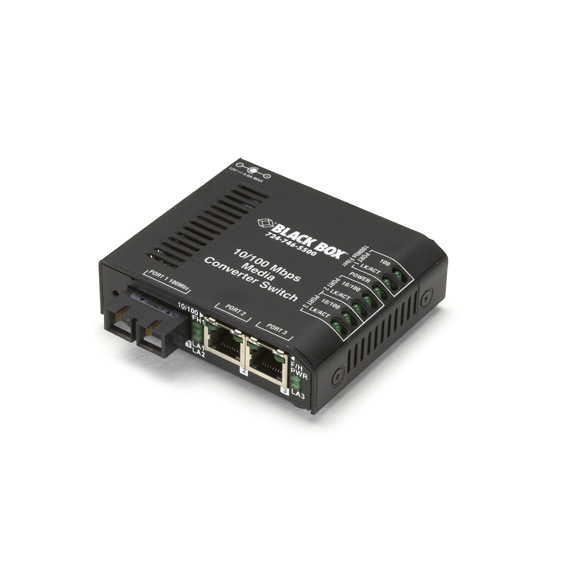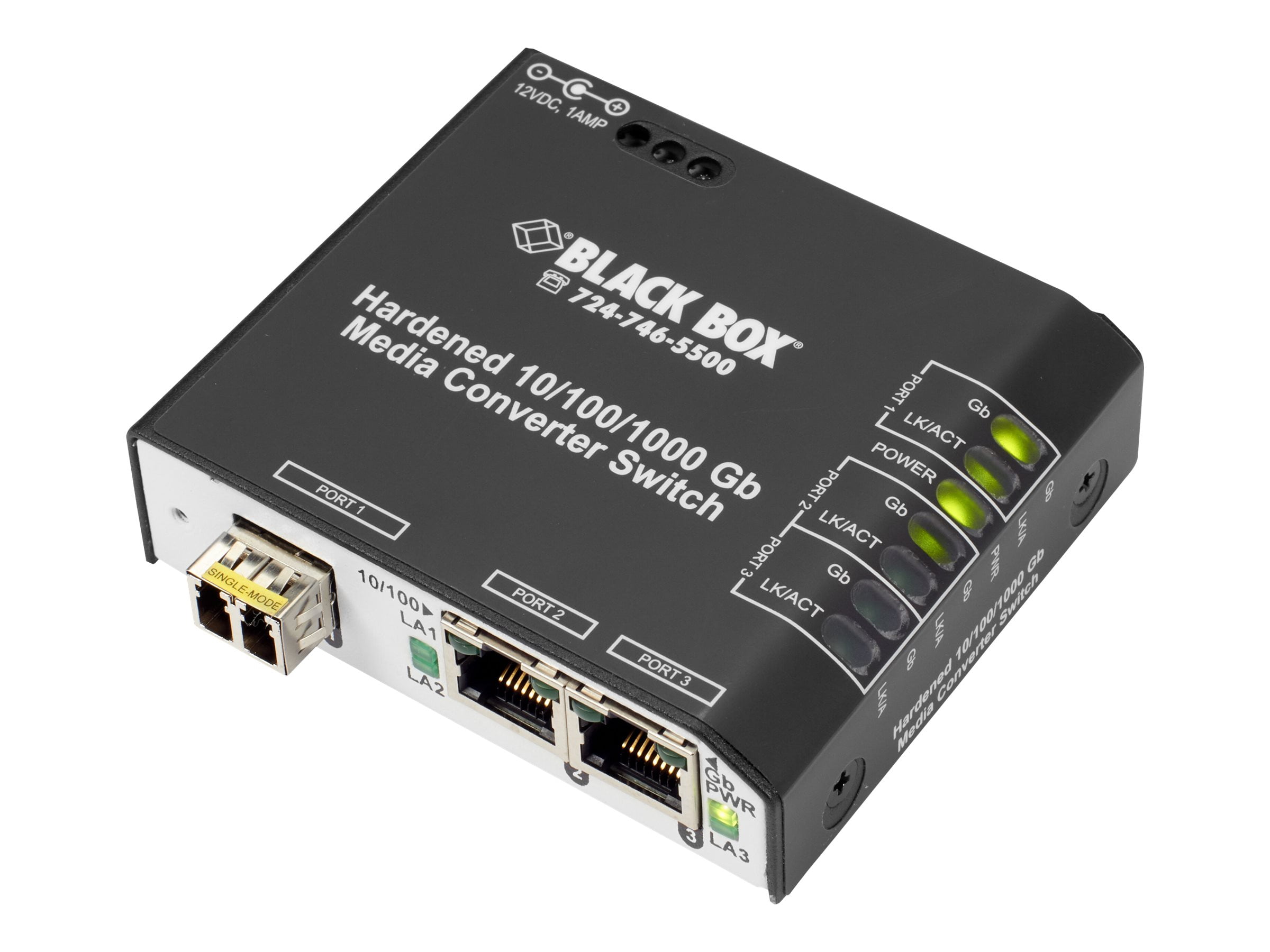

Media converter features Typically media converters are dumb devices, however, some have smart features that simplify the management of large networks. The USB to fiber Ethernet media converter acts as a Network Interface Card for your desktop or laptop to quickly deploy a Fiber To The Desk (FTTD) solution for security-sensitive applications, or those more than 100 meters from the switch. Media converters can be used on the desktop too. SFP ports can satisfy a wide range of distances and speeds, with transceivers able to operate on fibers from just a few meters in length, up to 120 Km. Media converter port speeds include Fast Ethernet, Gigabit and 10 Gigabit covering the most commonly used interfaces today.

Some converters provide Power over Ethernet (PoE) on the copper Ethernet port to power remote devices, like CCTV cameras or access control gates, simplifying deployment of physical security solutions. These devices use VDSL (Very high Data rate Subscription Line) technology to reach long distances over legacy cables. To allow the use of legacy infrastructure, media converters are available to convert Ethernet to co-ax or Ethernet to twisted-pair. Sometimes it’s not possible to use a fiber link because legacy infrastructure, such as twisted-pair phone cables or co-ax cables, are already in use, and replacing with new fiber is not practical. The transport protocol is always Ethernet to allow another converter or a switch equipped with the appropriate interface to be connected easily.

The most common model of media converter is the copper to fiber with one RJ45 port and one fiber port or SFP bay.
#BLACKBOX MEDIA CONVERTER SERIES#
Installations in harsh environments can be achieved with a dedicated series of rugged industrial media converters mounted in DIN rail cabinets. Media converters are typically small standalone unmanaged devices, but they can also form managed and unmanaged chassis solutions to integrate multiple devices within your network in a 19″ standard rack. Types of media converters The most common type of media converter connects fiber and copper cables, but others can convert Ethernet to VDSL or inject Power over Ethernet (PoE). Extending a network to a distant location is achieved by using a fiber connection from the switch and a media converter to connect to the device.įrom the network point of view, the extended connection is just an Ethernet link like any other, but it has a very long reach that solves the remote device problem without the need to add other switches to the network. If the requirement is to extend the LAN beyond 100 meters, a network extender is required and a media converter is the perfect solution.Ī media converter is usually a two-port device equipped with a copper interface on one side and a fiber interface on the other side. Or the new device is in an electrically “noisy” environment and a copper cable will be susceptible to electromagnetic interference.Ī computer placed in a remote location, an access point in an outdoor area, a video surveillance camera, or an access control system far from the last switch, are all typical examples of this kind of situation. This plan works well until a new device connects to a LAN port, but the device is more than 100 meters (300 feet) from the switch. LAN ports, however, are usually provisioned to keep some spare ports to allow new devices to be connected easily in the future. In a well-designed network, the goal is to use all the available uplinks to maximize throughput. The copper ports connect devices within a short-range (up to 100 meters) while the SFP uplinks can connect devices, like other switches or servers, that are further away. Switches mostly contain LAN ports, usually copper Ethernet with a few fiber-based uplink ports, often SFP-based. What is a media converter? Media converters provide flexibility to networking solutions by enabling fiber and copper cables to be easily connected.
#BLACKBOX MEDIA CONVERTER HOW TO#
This article explains what a media converter is and how to use it, the models available, and highlights some new time-saving features. But despite this, there is still confusion on how to use this family of devices.

Since the beginning of networking, media converters have played a fundamental role in solving network interconnection problems.


 0 kommentar(er)
0 kommentar(er)
